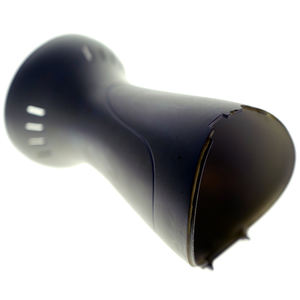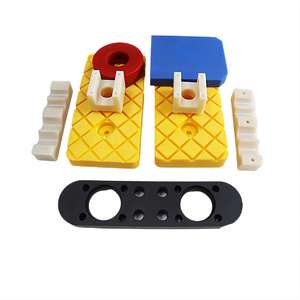**Say Goodbye to Plastic Spaghetti: Your Fun Guide to Cleaning Up 3D Prints**
(How To Remove Support Material 3d Print)
So you’ve just pulled a fresh 3D print off the bed. It looks cool, but there’s one problem: a tangle of plastic threads and weird structures clinging to it. That’s support material. It’s like the scaffolding that holds up a building—useful during construction but annoying to deal with afterward. Let’s talk about how to clean this up without turning your masterpiece into a modern art experiment.
First, get your tools ready. You’ll need needle-nose pliers, flush cutters, sandpaper (around 120 to 400 grit), a hobby knife, and maybe a small file. If your print is made of PLA or PETG, warm water could help. For resin prints, grab some isopropyl alcohol. Safety stuff matters. Wear gloves if you’re handling sharp tools or chemicals.
Start by looking at your print. Find where the supports connect to the actual model. Big, chunky supports are easier to spot. Use your pliers to grab the base of a support structure. Wiggle it gently. If it’s stubborn, twist instead of pulling straight. Yanking too hard might rip chunks out of your print. Patience is key here.
Smaller supports need a lighter touch. Switch to flush cutters or a hobby knife. Snip or slice close to the model’s surface. Keep the blade angled away from the print to avoid scratches. Tiny bits left behind? A few swipes with sandpaper can smooth things out. Start with coarse grit to remove bumps, then switch to finer grit for a polished look.
Resin prints are trickier. Supports here are thin and spidery. After washing your print in alcohol, let it dry. Use tweezers to peel supports off. If they’re stuck, dunk the print in warm water for a minute. The heat softens the resin, making supports easier to pluck. Sand any rough spots with fine-grit paper.
Sanding is your best friend for a pro finish. Rub in small circles, and don’t press too hard. Overdoing it can melt the plastic or create uneven spots. For hard-to-reach corners, wrap sandpaper around a toothpick. If you want that factory-level shine, use a polishing compound or a quick pass with a heat gun—just keep it moving to avoid warping.
Washing your print can help too. Soak PLA or PETG in warm soapy water for 10 minutes. This softens leftover bits, making them easier to scrape off with a toothbrush. Dry the print thoroughly before sanding or painting.
Here’s a pro tip: Adjust your slicer settings to make supports easier to remove. Try increasing the “support Z distance” slightly. This creates a tiny gap between the support and the model, reducing sticking. Use tree supports if your slicer has them—they’re easier to peel off and use less material.
Mistakes happen. If you chip the model, don’t panic. A dab of superglue can fix small breaks. For gaps, use a 3D-printable filler putty. Sand it smooth once it dries. If the surface looks scratched, a coat of primer or paint can hide the evidence.
Every print teaches you something. Maybe next time you’ll angle the model differently to cut down on supports. Or tweak the infill to save material. The goal is to make cleanup faster, so you spend less time picking plastic and more time showing off your creations.
(How To Remove Support Material 3d Print)
And remember, even the pros end up with a few battle scars. The trick is to make them invisible—or at least tell a good story about them. Happy printing, and may your supports always pop off in one piece!
Inquiry us
if you want to want to know more, please feel free to contact us. (nanotrun@yahoo.com)

